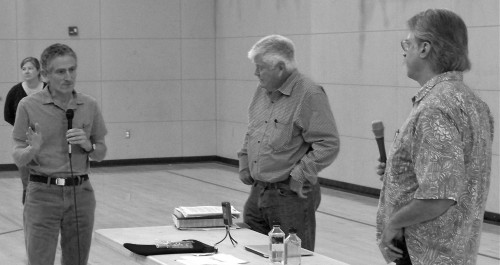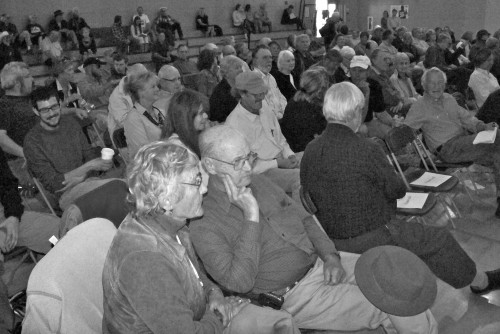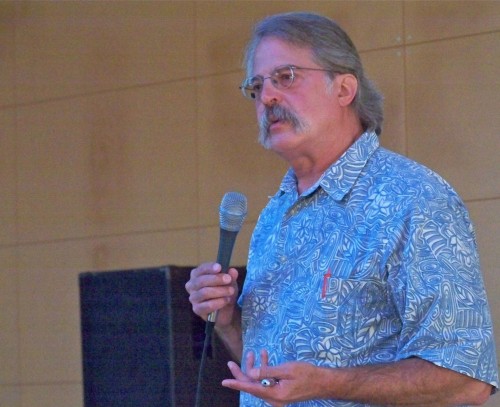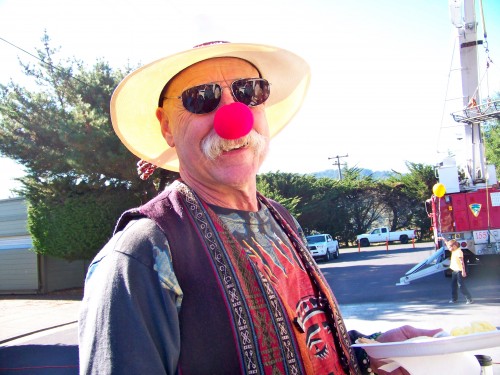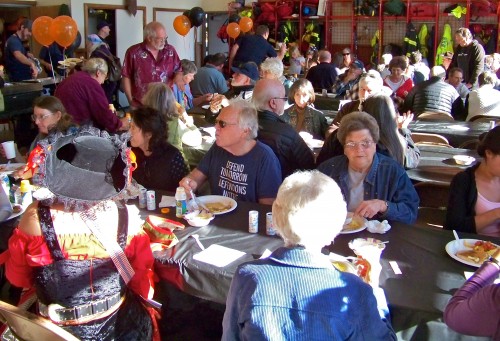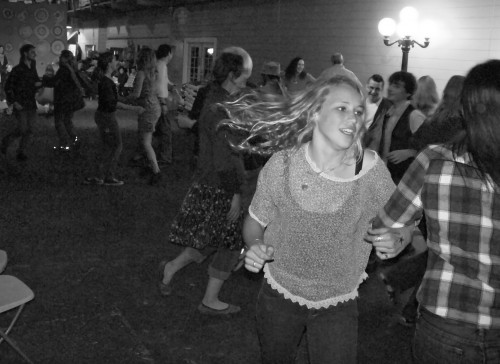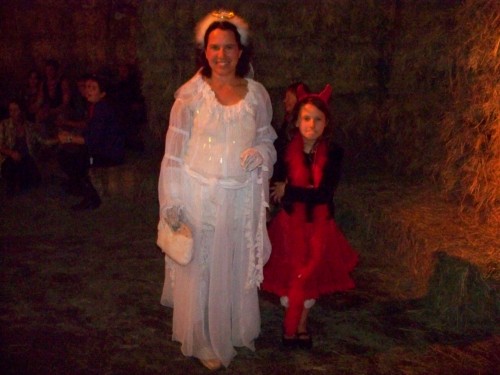
Dr. Corey Goodman of Marshall (left), who uncovered the National Park Service’s using bogus data to discredit Drakes Bay Oyster Company (owned by the Lunny family of Inverness), questions Pete McCloskey, a retired congressman (center), and Paul Berkowitz, a retired ranger and criminal investigator for the Park Service. Behind them and serving as moderator was Laura Watt, an assistant professor of Environmental Studies at Sonoma State.
During a symposium Sunday afternoon in the West Marin School gym, McCloskey and Berkowitz discussed “corruption” at the top levels of the National Park Service (NPS). Low-level rangers, they agreed, were more likely to be honest.
Berkowitz, who for 33 years was a ranger and criminal investigator for NPS, has written a book, The Case of the Indian Trader, which focuses on a particularly egregious example of corruption that occurred at the Hubbell Trading post on a Navajo reservation in Arizona. The book, however, also describes many other cases of criminal behavior by NPS staff, such as child molesting, theft of government funds, and shredding crime reports on people in NPS’s favor.

More than 115 West Marin residents showed up for the symposium, forcing organizers to put out extra chairs.
McCloskey, who spent 15 years in the House of Representatives, noted that the House Committee on Oversight and Government Reform, which is chaired by Darrell Issa (R-San Diego County), will begin an investigation on Nov. 7 of Point Reyes National Seashore officials. “The alleged misconduct is serious and could result in the loss of the Lunny family’s business,” Issa wrote Interior Department Secretary Ken Salazar. “Time is of the essence, as the family’s reservation of use expires next year.
“In light of a damaging draft Environmental Impact Statement released on Sept. 3, 2011, it is imperative that a thorough, objective review of whether NPS’s conclusions are based on flawed science occurs immediately.”
Among those summoned to testify before the committee are: Gavin Frost of the Solicitor’s Office (he has already turned up skulduggery within the Nation Seashore administration); Don Neubacher (former superintendent of the park); Jon Jarvis (NPS director, as well as the previous director of the Pacific West Region of NPS); Dr. Marcia McNutt (adviser to the NPS; Sarah Allen (former science adviser to the National Seashore); Dr. Ben Becker (NPS scientist); and Cicely Muldoon (current superintendent of the National Seashore).
McCloskey, 84, had been a colonel in the Marine Corps and was awarded the Navy Cross, the Silver Star and two Purple Hearts for outstanding service during the Korean War. The former congressman had also been a lawyer in Redwood City, a deputy district attorney in Alameda County, and a lecturer on legal ethics at the Stanford and Santa Clara law schools. He warned that any NPS official who doesn’t testify with total honestly will be charged with perjury.

Berkowtz had taken over an NPS investigation that had been triggered by Western National Parks Association allegations against Billy Malone, who operated Hubbell Trading Post. The allegations were based only on faulty intuition, but WNPA wanted Berkowtz to find something, anything, for which the trader could be prosecuted.
Berkowitz instead found that the NPS was hiding exculpatory evidence, had lied to get a search warrant, and then had seized much of Malone’s private property although the warrant did not provide for this. The case had been going on for a few years and had become expensive. WNPA, which was well over $1 million in debt, hoped to sell Malone’s personal property to pay off its debts.
The investigator said the Army’s cavalry originally kept order in national parks, which explains rangers’ uniforms. In 1916, however, the Park Service was created as a “civilian version of the military. It was disciplined, regimented, and had a rigid application of standards.” Over time, however, the Park Service abandoned critical components of military conduct, so that there’s now “an enormous variance of management competence.”
In 1976, the law that established the Park Service was strengthened, Berkowitz said, giving NPS authority to investigate all federal-law violations in national parks. He concluded by saying he loves national parks and would never want to harm them. However, he added, NPS leaders’ corruption must be stopped.

The annual pancake breakfast was held Sunday morning in the Point Reyes Station firehouse. The event is always a fundraiser for the West Marin Disaster Council and the Inverness Volunteer Fire Department.
 Having fun at the pancake breakfast was Rich Clarke of Marshall, a member of the West Marin Disaster Council.
Having fun at the pancake breakfast was Rich Clarke of Marshall, a member of the West Marin Disaster Council.

Approximately 325 people attended the pancake breakfast, and a firefighter told me the crowd was the largest in years. He credited sunny weather for bringing out so many West Marin residents.

West Marin Commons sponsored a Halloween barn dance in Toby’s Feed Barn Friday evening. Band members (from left): Brian Lamoreaux on guitar, Sue Walters on bass, Ingrid Noyes on accordion, and Erik Hoffman on fiddle. Because the feed barn is unheated and the band sits next to an open door, there will be no more barn dances this season. It’s becoming too cold for the musicians.
 However line dances, square dances, and even waltzes kept the dancers warm.
However line dances, square dances, and even waltzes kept the dancers warm.

Angel mother Denise Spenard of Marshall and devil daughter Maia, 8, had a jolly time wearing Halloween costumes to the barn dance.
 Last week I reported finding coyote scat on my driveway and noted that neighbor George Stamoulis had not only found the scat on his driveway, he’d seen the critter itself ambling up Campolindo Road.
Last week I reported finding coyote scat on my driveway and noted that neighbor George Stamoulis had not only found the scat on his driveway, he’d seen the critter itself ambling up Campolindo Road.















